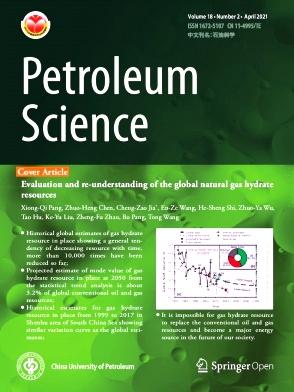The real-time dynamic liquid level calculation method of the sucker rod well based on multi-view features fusion
IF 6
1区 工程技术
Q2 ENERGY & FUELS
引用次数: 0
Abstract
In the production of the sucker rod well, the dynamic liquid level is important for the production efficiency and safety in the lifting process. It is influenced by multi-source data which need to be combined for the dynamic liquid level real-time calculation. In this paper, the multi-source data are regarded as the different views including the load of the sucker rod and liquid in the wellbore, the image of the dynamometer card and production dynamics parameters. These views can be fused by the multi-branch neural network with special fusion layer. With this method, the features of different views can be extracted by considering the difference of the modality and physical meaning between them. Then, the extraction results which are selected by multinomial sampling can be the input of the fusion layer. During the fusion process, the availability under different views determines whether the views are fused in the fusion layer or not. In this way, not only the correlation between the views can be considered, but also the missing data can be processed automatically. The results have shown that the load and production features fusion (the method proposed in this paper) performs best with the lowest mean absolute error (MAE) 39.63 m, followed by the features concatenation with MAE 42.47 m. They both performed better than only a single view and the lower MAE of the features fusion indicates that its generalization ability is stronger. In contrast, the image feature as a single view contributes little to the accuracy improvement after fused with other views with the highest MAE. When there is data missing in some view, compared with the features concatenation, the multi-view features fusion will not result in the unavailability of a large number of samples. When the missing rate is 10%, 30%, 50% and 80%, the method proposed in this paper can reduce MAE by 5.8, 7, 9.3 and 20.3 m respectively. In general, the multi-view features fusion method proposed in this paper can improve the accuracy obviously and process the missing data effectively, which helps provide technical support for real-time monitoring of the dynamic liquid level in oil fields.
基于多视角特征融合的抽油杆井实时动态液面计算方法
在抽油杆井的生产过程中,动态液位对生产效率和提升过程的安全性非常重要。它受到多源数据的影响,需要结合这些数据进行动态液位实时计算。在本文中,多源数据被视为不同的视图,包括抽油杆和井筒中液体的载荷、测力计卡的图像以及生产动态参数。这些视图可以通过带有特殊融合层的多分支神经网络进行融合。利用这种方法,可以通过考虑不同视图之间模态和物理意义的差异来提取它们的特征。然后,通过多叉抽样选出的提取结果可以作为融合层的输入。在融合过程中,不同视图下的可用性决定了视图是否在融合层中融合。这样,不仅可以考虑视图之间的相关性,还可以自动处理缺失数据。结果表明,负载和生产特征融合(本文提出的方法)效果最好,平均绝对误差(MAE)最低,为 39.63 m;其次是特征串联,平均绝对误差为 42.47 m。相比之下,作为单一视图的图像特征在与其他视图融合后对准确率的提高贡献不大,其 MAE 最高。当某些视图出现数据缺失时,与特征串联相比,多视图特征融合不会导致大量样本缺失。当缺失率分别为 10%、30%、50% 和 80% 时,本文提出的方法可将 MAE 分别降低 5.8、7、9.3 和 20.3 m。总的来说,本文提出的多视角特征融合方法能明显提高精度,并能有效处理缺失数据,有助于为油田动态液位的实时监测提供技术支持。
本文章由计算机程序翻译,如有差异,请以英文原文为准。
求助全文
约1分钟内获得全文
求助全文
来源期刊

Petroleum Science
地学-地球化学与地球物理
CiteScore
7.70
自引率
16.10%
发文量
311
审稿时长
63 days
期刊介绍:
Petroleum Science is the only English journal in China on petroleum science and technology that is intended for professionals engaged in petroleum science research and technical applications all over the world, as well as the managerial personnel of oil companies. It covers petroleum geology, petroleum geophysics, petroleum engineering, petrochemistry & chemical engineering, petroleum mechanics, and economic management. It aims to introduce the latest results in oil industry research in China, promote cooperation in petroleum science research between China and the rest of the world, and build a bridge for scientific communication between China and the world.
 求助内容:
求助内容: 应助结果提醒方式:
应助结果提醒方式:


